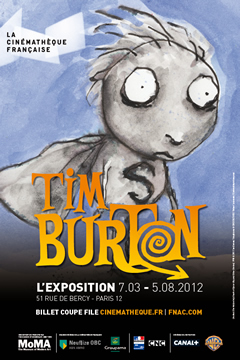Article: Herbert, W. (2011). “Deadline Pressure Distorts Our Sense of Time.” scientificamerican.com. Visited on October 9th, 2012: http://www.scientificamerican.com/article.cfm?id=looming-deadlines Summary: The perceived difficulty and deadline pressure associated with a task alters our perception of time. In an initial study, subject were presented with a series of tasks of varying difficulty and asked how far away the day of completion felt to them. The tasks that were more complex and work intensive were perceived as being further in the future. To arrive at this result our brains are translating effort into time, assuming that the more difficult tasks must be further away since they will require more work to complete. An opposite effect is encountered when deadlines are associated with the tasks. If subjects are presented with either an easy or difficult task that they must complete by a set date in the future, those with the more complex and effortful task report that the date feels much closer to them than those with the simple task. This effect may sometimes cause us to feel overwhelmed as multiple complex tasks pile up on us, but our skewed perception of time also ensures that we typically complete necessary tasks within the actual amount of time…
Tag Archive for problem solving
Background Knowledge, Background Knowledge Errors, Ethnographic & User Data, Language, Mental Model Traps, Pipsqueak Articles
The Language Comprehension Continuum
by Olga Werby •
Below is an example of communication error — Penn and Teller use strong emotional language and delivery to hide the true meaning of the message. In context — a pretty young woman anxiously and passionately asking individuals at a faire to protect the environment — signing the petition makes sense. People sign many petitions. And the more people sign (or the more signatures they see on the petition), the more likely others sign as well. A woman, seemingly in distress over an environmental problem, inspires an emotional reaction — people want to help. We have a built-in social value system that encourages this kind of behavior. And finally there’s a strong p-prim that all chemicals are bad — so just hearing a chemical compound in a petition gets a response from the crowd. The result? On the language comprehension continuum, these faire goers didn’t do so well…
Conceptual Design, Interaction Design, Pipsqueak Articles, Product Design Strategy, Scaffolding
BRIDGE to Health
by Olga Werby •

This week, I was invited to attend a BRIDGE Summit at Stanford. I was there to represent Ushahidi’s work and wasn’t particularly sure what to expect… But it turned out to be a very interesting brainstorming session for a new product/service in the health space: BRIDGE. Dr. Stephen Friend (M.D. and PH.D., president/co-founder/director of Sage Bionetworks) ran the show. What you will read below are just my notes, ideas, and understanding of what we were trying to do. I’m sure others at this summit came away with a whole different set thoughts, but, in the interest of advancing my own understanding and sharing of ideas in general, it seemed worth putting together a narrative of the product we were designing. So what is BRIDGE? After a two day discussion, we settled that BRIDGE is a platform (rather than an app) that will strive to: help gather medical information; crowdsource algorithms that would act on collected data with an aim to make medical advances; provide services to patients (information, education, support); facilitate research and make it easier for scientists to get access to data and to post requests for crowdsourcing projects; ease communication between all individuals and organizations working to advance…
Anchoring Errors, Pipsqueak Articles
Doctors and Anchoring Errors
by Olga Werby •

In the past few months, two people I know almost died (one will die very soon) due to medical mistakes. Considering both of these men are well educated and live in America, in major metropolitan areas, with access to a wide variety of experts, and with very supportive family and friends, how can this happen? Tragically enough, their stories are not the exceptions. They fell victim to Anchoring Errors — judgement errors common in situations with lots of stress (e.g. emergency rooms); where many individuals are involved (e.g. a parade of doctors assigned to a patient in a hospital); where there’s inadequate time for problem solving (again, think emergency rooms); and, most importantly, there’s no built-in mechanisms to go back and re-conceptualize the problem, to re-diagnose, and to change the solution in the light of other variables or data. Doctors make mistakes. We ALL do, all the time. But when doctors make it, the prognosis for the patients are sometimes dire. In the cases I’m about to describe, deadly… “How Doctors Think” is an amazing book and one I have given to many of my friends and family and even to my personal physician. It describes way in which even…
Conceptual Design, Cultural Differences, Interaction Design, Interface Design, Pipsqueak Articles, Product Design Strategy
Design and the Olympic Games
by Olga Werby •

The Olympic Games are coming to a close and there are some interesting design decisions that seem worth mentioning. But let’s start with a cursory set of design requirements: safety, transportation, visibility and observability of events, entertainment, fairness, cultural sensitivity and appropriateness, and so much more. As with all design problems, divide and concur is a good approach: who are the audiences; what are their needs; what are the time, budget, and personal resources of the project; and what are the considerations (goals) of the sponsoring country. These are the basics of product design. From these variables, we can set priorities and deduce probabilities of errors and failures and how to accommodate them with design. Clearly, this is too much to cover in one blog, but here are a few thoughts… Safety There are many safety concerns in staging big, multinational events. Let’s first consider the different groups of individuals: safety for the participants, organizers, audience, supporting staff. We can break this down even more (by country, by sex, by religion, by location, by celebrity, etc.), but these are the large categories. It’s important to consider the safety for each group separately and provide supports as necessary. There are different…
Anchoring Errors, Background Knowledge, Conceptual Design, Cultural Bias, Cultural Differences, Mental Model Traps, Pipsqueak Articles, Product Design Strategy, Scaffolding
Designing an Optimum Nudge
by Olga Werby •

I’m sitting by a window looking out at a rainy Paris street, thinking of cultural differences between Paris and San Francisco, taking advantage of bad weather to do some writing. Over two decades ago, I did some ethnographic research a Exploratorium, looking at how different visitors interacted with the museum’s hands-on exhibits. I was looking for ways to improve the visitors’ experience, raise understanding of the phenomena they were observing. What I saw was different ways in which visitors experienced failure: p-prims that got in a way; folksy wisdom that caused confusion; lack of affordances that led to bottlenecks; permission giving that set up strange expectations; etc. The results of this study turned into a Master Thesis for UC Berkeley. Now, I would like to explore some of the ideas that surfaced during my Exploratorium research and apply them to design of nudging — carefully crafted affordances and perceptual cues that manipulated users into acting a certain way while maintaining the illusion of freedom of action. Let me start with a bit of history — a quick summary of some of the results of Exploratorium study. Permission Giving Two decades ago, “hands-on” exhibits were still novel in the museum world.…
Anchoring Errors, Background Knowledge, Background Knowledge Errors, Cognitive Blindness, Cultural Bias, Cultural Differences, Diagnostic Errors, Errors, Ethnographic & User Data, Group Decision Errors, Mental Model Traps, Mirroring Errors, Misapplication of Problem Solving Strategies, Pipsqueak Articles, Product Design Strategy, Users
Cultural Barriers to Success
by Olga Werby •

Man-made Disasters in a Wake of Tsunami This month, The Fukushima Nuclear Accident Independent Investigation Commission issued its final report on the disaster: It was man-made! Here’s a quote from the report: What must be admitted — very painfully — is that this was a disaster “Made in Japan.” Its fundamental causes are to be found in the ingrained conventions of Japanese culture: our reflexive obedience; our reluctance to question authority; our devotion to ‘sticking with the program”; our groupism; and our insularity. Had other Japanese been in the shoes of those who bear responsibility for this accident, the result may well have been the same. The last sentence is particular insightful — the blame was not rested on the shoulders of a particular individual, as tempting as that might be, or even on the shoulders of some manager. The fault was places on the cultural context in which the incident played out. Museums in Paris We just got back from seeing a Tim Burton exhibit at the La Cinémathèque, in Paris. The content of the exhibit, as one could imagine, is quite wonderful. But there were many, many human failures in making the visit an enjoyable experience. And yes,…
